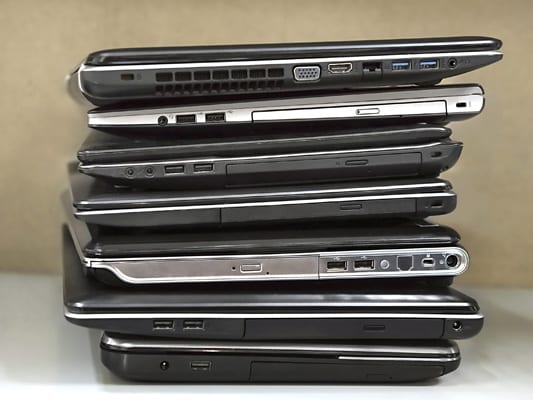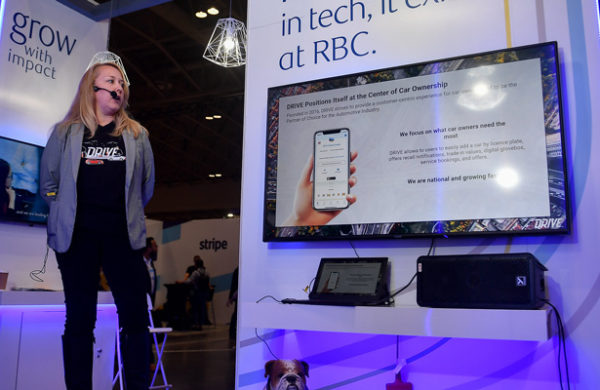
The laptop computer revolutionized the way people work and travel nearly as much as the original computer did. Alan Kay, who worked for Xerox PARC, first created the concept for the laptop computer. He referred to it as the Dynabook. Xerox PARC did come up with a working model of the Xerox Note Taker in 1976, but it was not available to the public.
The current folding clamshell design was first used in 1982.
The first laptop computer available to the public was the Osborne 1. The Osborne Computer Corporation released this model in 1981. It cost $1795 at the time of release. The screen was five inches long and the keyboard was in the lid of the computer. (The screen of the Eee netbook pictured here is not much bigger!) It did not have a battery and was quite heavy. A portable battery was designed and available for purchase after its first release. Most of the early “portable” computers weighed about twenty-five pounds. Many of the early laptops were called luggables because they were so heavy!
Netbooks are the smallest consumer laptops yet and offer unprecedented portability.
Since the Osborne 1, the laptop has changed over the years. Innovations to desktop computers eventually trickled down to laptops as well. The first laptop to be comfortably lap-sized was the Epson HX20, which became widely available in 1983. It was powered by batteries and included a small printer. Better batteries were able to reduce the weight of the computers. The current folding clamshell design was first used in 1982. Laptops have grown smaller over the years as technology and storage capabilities have improved. Laptops now come with DVD burners and CD-ROM drives, which make it much easier to store and access information. There is a variety of laptops to choose from depending on your needs. Laptops were first marketed to a specific niche market, such as accountants and the military. Soon there will be more laptops on the market than desktop computers. Additionally, many different professions use laptops. They are especially useful in making presentations and in helping businesspeople as they travel, since they can rent a projector to accompany their own laptops or, vice versa, rent laptops to match the built-in projectors found in many meeting spaces today. The general universality of laptops (except Mac laptops, which have adapters) means the equipment you choose will be simple to connect. There are many types of laptops available to consumers. Some laptops are designed as a replacement for a desktop computer and these come with a larger screen and more memory. Other laptops are designed with portability in mind. These computers tend to be smaller and have a smaller amount of memory. Some are used primarily to access the Internet. Some companies allow you to build your laptop to certain specific requirements. Laptops are available in both PC and Mac formats. Laptops offer the advantage of being portable, allowing people to work wherever they are. This is a great advantage to businesspeople when they travel. College students also enjoy the flexibility that a laptop provides. Some colleges now require enrolling first-year students to purchase laptops. Some high schools have the same requirement, or provide laptops for their students to use. Other people are working to bring laptops to countries in the developing world. These machines cost $100.00 and are powered by a hand crank, enabling people with little or no access to electricity to word process and access the internet.


